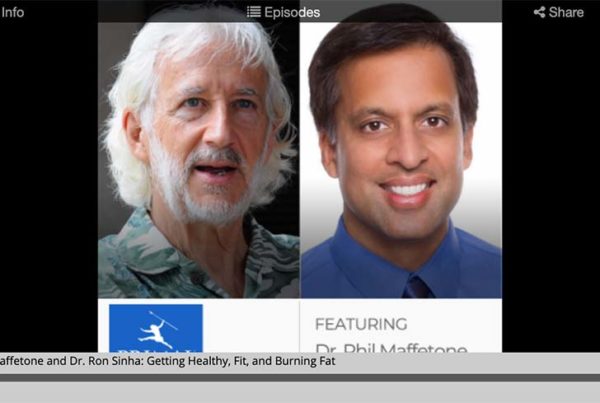The Oral-Nutrient-Brain-Body Pathways
The glycemic index (GI) has gained popularity since the publishing of a landmark study by Jenkins and colleagues in 1981 entitled, “Glycemic index of foods: a physiological basis for carbohydrate exchange.” Since that time, the GI of many hundreds of individual carbohydrate foods have been determined by testing the effect on blood sugar in healthy subjects for most evaluations, and in some cases the test subjects were diabetics.
The cephalic phase of digestion, through the actions of taste buds, can immediately and significantly affect the brain and body. These oral-nutrient-brain-body pathways and their potential influence on GI have not previously been discussed, nor has it been considered when formulating the glycemic index. I propose that the effects of the taste buds during cephalic digestion influences the outcome of testing individual carbohydrate foods to determine its glycemic index.
Tasting, Chewing and Cephalic Digestion
Most of us have felt the acute effects cephalic digestion. Consider a time when you may have missed a meal, your blood sugar and energy are low, and brain function is not optimal. You finally get some food and in a matter of seconds – even while chewing your first bite – you feel better. While this action works through the autonomic nervous system (eating initially stimulates the sympathetic component), the mechanism can significantly affect blood sugar and insulin.
The health benefits of tasting and chewing food have been well known scientifically for over a century. They include improving the first important chemical stage of carbohydrate digestion through the action of amylase, the physical breakdown of foods to increase its surface area to aid further digestion in the stomach and small intestines, and stimulating the taste buds, which sense food and immediately sends that information to the brain. There appears to be at least two pathways that transmit gustatory information from the taste buds. One leads to higher cortical centers and helps discriminate between taste qualities (sweet, bitter, sour, salty, umami* and possibly fats). The other pathway involves the cephalic phase of digestion and includes salivation and swallowing.
Russian physiologist Ivan Pavlov’s groundbreaking research into the importance of chewing and cephalic digestion in humans won him a Novel Prize in 1904. After more than a century, physiologists continue building on his research. The taste receptors on the tongue detect extremely small concentrations of substances within the short time it takes to taste it. This elicits a variety of immediate responses throughout the body, including stimulating heat production and fat-burning, improving digestion and absorption, and even the immediate use of nutrients from foods. The cephalic phase of digestion, which can last about 10 minutes, also helps regulate blood sugar over the next several hours.
Glycemic Index
The GI has evolved over the past 30 years, and is a general measure of a carbohydrate food’s influence on blood sugar levels. Carbohydrates that break down quickly during digestion, rapidly absorb glucose to stimulate higher levels of insulin are said to have a higher GI while carbohydrates that break down more slowly have a lower GI. Despite a controversial beginning, the GI today is well recognized as a physiologically based classification of foods based on glycemic response. While the determination of glycemic values are generally reproducible, there is still a wide variation in figures for the same foods in some instances.
How the cephalic phase of digestion affects the GI, through the action of the taste buds communication with the brain and body, is currently unknown. I propose the possibility that the cephalic phase of digestion could affect the GI of particular foods and potentially in a significant way. In particular, it’s possible that the status of the test subject’s taste buds and whether they obtain a good taste or no taste of the food could influence the end result GI. In fact, such a small number of test subjects are typically used to determine GI, that the influence from taste bud stimulation can be critical. (Test for some foods employed as little as 4-6 subjects.)
The work of Dr. David Jenkins and colleagues in 1981 at the University of Toronto in their research with diabetes, and has brought the GI, and has gained significant credibility for use with all individuals seeking better health. My clinical work was influenced greatly when Jenkins published his research. It was one of the key factors in the formulation of my Two Week Test, where patients remain on a low glycemic two-week regime to reduce insulin levels while various health factors are evaluated before and after.
The GI is not a list of healthy vs. unhealthy foods; in fact, most of the foods on the list are unhealthy. In recent years the public has embraced the list in a trendy and unhealthy way, learning to manipulate a high glycemic food’s index by adding other unhealthy foods. For example, a modern day French baguette has a very high GI of 95 (pure white sugar being 100). But add butter and strawberry jam and it’s lowered to 68; many rationalize this being a healthy choice.
Oral-Nutrient-Brain-Body
Dr. George Goodheart wrote about hyperinsulinism in the late 1960s and previous to that there were sufficient references to the health risks of refined carbohydrates, especially their impact on insulin and blood sugar. Goodheart was also one of the first to consider the relationship between taste buds and brain, implementing a system assessing nutrient tastes and their immediate impact on muscle function. This theory has been given a boost with research in recent years showing the mechanisms associated with these changes between taste buds and brain. In a recent study, Chambers and colleagues showed a significant influence in muscle function and cycling performance following the sensation of carbohydrate taste only in the mouth. This study showed that “there may be a class of so far unidentified oral receptors” that respond to nutrient taste. The tests were performed on athletes with a sweet carbohydrate solution used in the mouth only – subjects tasted then spit the solution out. They used both a one-hour cycling test, which showed improved performance just by tasting, and functional magnetic resonance imaging (fMRI) to demonstrate that there are specific areas in the cortex associated with oral receptor stimulation. Similar studies were done using water as a nutrient.
Conclusion
Considering the results of these and other studies, it seems possible that the process of determining the glycemic index of various foods would be highly influenced by the oral stimulation of taste and its influence on the brain. If this were the case, the extensive research already done that determined the GI of nearly 1300 carbohydrate foods would have to be reconsidered. Moreover, it may serve as a warning for the millions of people who blindly follow a diet based on the glycemic index. The food industry has countered people’s attempt at avoiding high glycemic items by offering highly processed, artificial low glycemic packaged foods (often found in so-called health food stores). Instead, consuming a diet full of natural foods while choosing to avoid harmful items may be ideal.
Whatever research uncovers in the coming years, we can utilize the oral-nutrient connection for our own health. Certainly, chewing our food to obtain the natural benefits of whatever relationship exists between mouth and brain makes sense. Just as important, avoiding processed carbohydrates (most of which are high glycemic) is prudent as they have clearly been shown to increase body fat and raise the risk of heart disease, cancer and other chronic illnesses.
*Umami (from Japanese referring to taste) is a pleasant savory taste stimulated by glutamate, and ribonucleotides, (including inosinate and guanylate). These natural compounds occur in meat, fish, vegetables, dairy products and other foods.
Be sure to read “Glycemic Update.”
Partial Bibliography
Jenkins DJ et al. (1981). Glycemic index of foods: a physiological basis for carbohydrate exchange. Am J Clin Nutr 34; 362–366.
Foster-Powell K, Holt S and Brand-Miller J. (2002). International table of glycemic index and glycemic load values: 2002. Am J Clin Nutr 76 (1): 5-56.
Chambers ES, et al. (2009). Carbohydrate sensing in the human mouth: effects on exercise performance and brain activity. J Physiol; 587: 1779-1794.
de Araujo et al. (2003). Representation of umami taste in the human brain. J Neurophysiol 90: 313-319.
De Araugo, I et al. (2003). Human cortical responses to water in the mouth, and the effects of thirst. J Neurophysiol; 90: 1865-1876.








